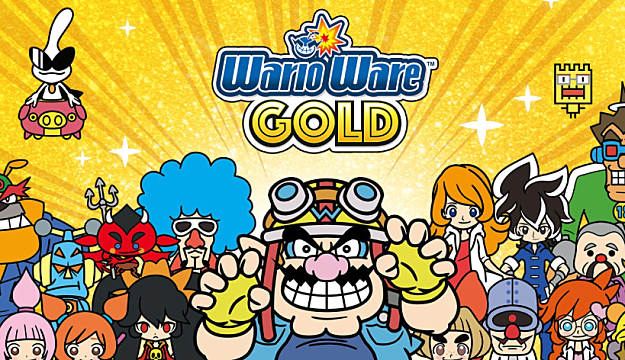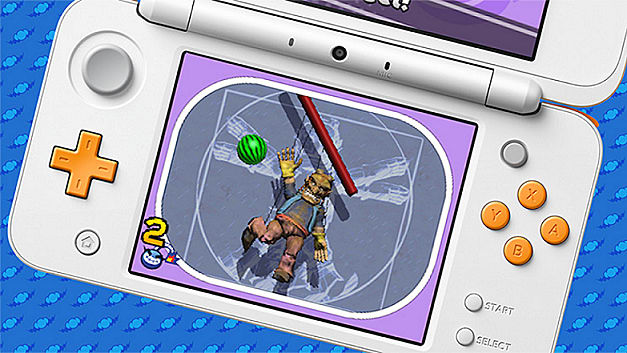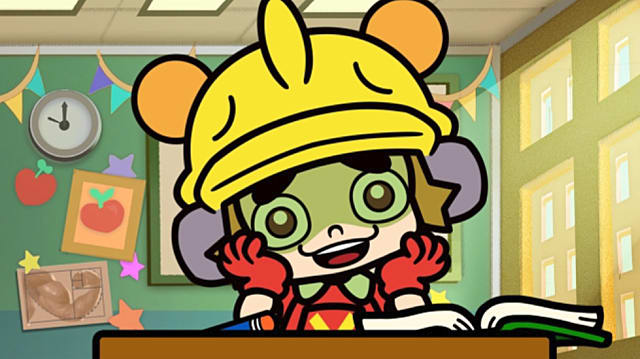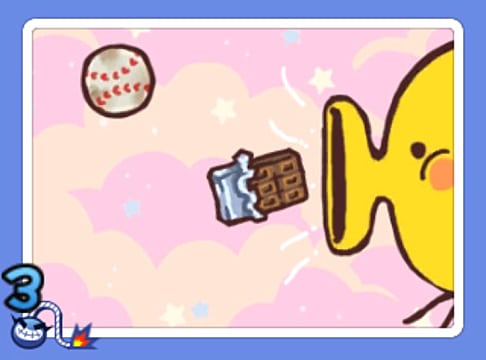

Ever since Wario decided to jump into the microgame business back in 2003 with WarioWare, Inc.: Mega Microgames! for the GBA, I've loved playing each new iteration as the series pushed forward. Every game introduced something fresh and new, whether it was using the gyrometer in WarioWare: Twisted!, the touchscreen in WarioWare: Touched!, or the unique and creative use of motion controls in WarioWare: Smooth Moves for the Wii.
Unfortunately, WarioWare Gold doesn't add anything new or creative in those ways. But that's OK. Instead, it acts as a greatest hits collection of microgames spanning the history of the series, one that's still as fun and addictive as it's ever been.
Right from the get go, you're greeted to a cut-scene featuring Wario speaking full dialogue for the first time ever(!). It's as disturbing as it is silly and reveals Wario's goal: making quick cash in order to buy more pizza. He does so by getting the usual cast of WarioWare characters together to make microgames for him. Classic characters like Mona, 9-Volt, and Dr. Crygor return as well as a couple new characters like 9-Volt's mother, 5-Volt, and Lulu.
The goal in the WarioWare series is to clear a set of microgames in succession. But you're only given a few seconds to figure out how to clear them. After a set number of microgames, you will be challenged to a boss stage, which takes a little more time to complete. Each stage features one of the aforementioned characters alongside a unique set of microgames, usually set to a theme.
Anyone familiar to the series will know the basic formula of progressing through the game: clear a few character stages and then play Jimmy T.'s stage, which remixes everything you just played. However, WarioWare Gold switches up this routine by featuring three different leagues to complete. There's the Mash League, which utilizes only the A button and the D-pad; the Twist League, which uses motion controls; and the Touch League, which, as you guessed it, uses the touch screen.
Each of these leagues features four different characters set to one of four themes. The Sports theme features microgames like hula hooping, synchronized swimming, and completing a snowboarders trail down a mountain. In That's Life, you complete a set of microgames revolving around everyday life, such as brushing your teeth, catching toast as it pops out of the toaster, and waiting for an open bathroom stall to dash towards. There's a Nintendo theme, which spans across Nintendo's history of games like Super Mario Kart, Animal Crossing, and even The Legend of Zelda: The Wind Waker. And finally, there's the fantasy theme, which has everything from shaving the Earth to making puppies dizzy.
The main story can be completed in as little as an hour. However, the main hook to the WarioWare games is repeatedly playing its stages to rack up a high score. Each stage will initially end after you've beaten the boss stage, but replaying stages puts you in an endless loop of microgames and bosses. The speed increases every few microgames and defeating a boss stage levels you up, making each microgame a little harder.
The increased speed, combined with the difficulty jump, makes this whole process an addictive thrill ride good for short play sessions. It's incredibly easy to get wrapped up in attempting to beat your high score, which gives WarioWare its lasting appeal. A handful of stages sees the modes changing on the fly and will prompt you when it is time to change.

Besides the main story mode, there's a myriad of little distractions to explore.
There's challenge mode, which has you completing microgames set to specific conditions. The Thrill Ride mode gives you only one life to get as far as possible, while the Super Hard mode makes you complete microgames at a ridiculously high speed.
One of the more interesting modes is Split Screen, featuring the ninja characters Kat and Ana. As one microgame ends on the bottom screen, a new one will immediately begin on the top screen, forcing you to stay on your feet, especially as the speed increases.
Sneaky Gamer was taken right out of Game & Wario for the Wii U. In this mode, 9-Volt tries to stay up late playing video games without getting caught by his mother. As you play through the microgames, you must pretend that you're asleep as 5-Volt pops in and out of the room. Getting caught ends the game.
On top of that, there's the Toy Room, which is a collection of fun little activities and trinkets that can be unlocked by spending coins on a capsule machine. There's the Studio Session, which allows you to record your own voice over the game's different cut-scenes. There are mini-games, character cards, phones to play with, toys that do weird stuff when you interact with them, and even a Nintendo museum. In the latter, I discovered Nintendo products I never knew existed, like a Nintendo Love Tester and N&B Blocks.
---
Overall, WarioWare Gold for the 3DS may not make waves in the way of new content, but the mash up of microgames from the entirety of the series makes it an ideal entry for fans both old and new. It has everlasting replayability and is a fine example of Nintendo's weirder side.
It's good to see that this unique series hasn't been forgotten and hopefully, the success of Gold will give way to future titles on the Switch and beyond. It's good to see Wario back in business, and I look forward to seeing what he cooks up next.


0 comments:
Post a Comment